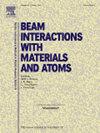使用KOA-XGBoost-SHAP机器学习框架预测和解释(n,2n)反应截面
IF 1.4
3区 物理与天体物理
Q3 INSTRUMENTS & INSTRUMENTATION
Nuclear Instruments & Methods in Physics Research Section B-beam Interactions With Materials and Atoms
Pub Date : 2025-07-02
DOI:10.1016/j.nimb.2025.165789
引用次数: 0
摘要
(n,2n)反应截面的准确预测对核应用至关重要,但由于实验困难和数据稀缺而面临挑战。本研究提出了一种新的三重混合机器学习框架KOA-XGBoost-SHAP来解决这些挑战。该框架集成了用于超参数调优的开普勒优化算法(KOA)、用于预测的XGBoost模型和用于可解释性的SHapley加性解释(SHAP)。利用EXFOR数据库中的1,282 (n,2n)截面数据点,涵盖入射中子能量(EN)从1到375 MeV,目标核素Z从1到94,A从2到239,利用KOA对6个ML模型进行了优化。在对EXFOR测试集进行基准测试时,KOA-XGBoost模型显示出优越的预测精度(R2 = 0.94, RMSE = 152.99 mb)。值得注意的是,它与这些原始EXFOR实验数据的直接一致性也优于ENDF/B-VII。在相同的测试集数据点上进行1次评估(R2 = 0.84, RMSE = 247.90 mb)和默认TALYS 2.0计算(R2 = 0.75, RMSE = 312.59 mb)。SHAP分析定量地确定了输入特征(入射中子能量、目标/产物核素性质、q值)的贡献,揭示了EN和目标特征占主导地位。此外,SHAP阐明了协同特征相互作用,为影响截面的物理机制提供了数据驱动的见解。本研究展示了一个稳健、准确、可解释的机器学习框架,用于(n,2n)横截面预测,展示了其直接基于实验数据进一步完善预测的能力,补充了ENDF和TALYS等现有方法。本文章由计算机程序翻译,如有差异,请以英文原文为准。
Prediction and interpretation of (n,2n) reaction cross sections using a KOA-XGBoost-SHAP machine learning framework
Accurate prediction of (n,2n) reaction cross sections is crucial for nuclear applications but faces challenges due to experimental difficulties and data scarcity. This study proposes a novel triple-hybrid machine learning framework, KOA-XGBoost-SHAP, to address these challenges. The framework integrates the Kepler Optimization Algorithm (KOA) for hyperparameter tuning, the XGBoost model for prediction, and SHapley Additive exPlanations (SHAP) for interpretability. Using 1,282 (n,2n) cross-section data points from the EXFOR database, covering incident neutron energies (EN) from 1 to 375 MeV and target nuclides with Z from 1 to 94 and A from 2 to 239, six ML models were optimized using KOA. The KOA-XGBoost model demonstrated superior predictive accuracy (R2 = 0.94, RMSE = 152.99 mb) when benchmarked against the EXFOR test set. Notably, its direct agreement with these raw EXFOR experimental data was also better than that achieved by ENDF/B-VII.1 evaluations (R2 = 0.84, RMSE = 247.90 mb for available points) and default TALYS 2.0 calculations (R2 = 0.75, RMSE = 312.59 mb) on the same test set data points. SHAP analysis quantitatively identified the contributions of input features (incident neutron energy, target/product nuclide properties, Q-value), revealing that EN and target characteristics are dominant. Furthermore, SHAP elucidated synergistic feature interactions, offering data-driven insights into the physical mechanisms influencing cross sections. This research demonstrates a robust, accurate, and interpretable ML framework for (n,2n) cross-section prediction, showcasing its capacity to further refine predictions based directly on experimental data, complementing established methods like ENDF and TALYS.
求助全文
通过发布文献求助,成功后即可免费获取论文全文。
去求助
来源期刊
CiteScore
2.80
自引率
7.70%
发文量
231
审稿时长
1.9 months
期刊介绍:
Section B of Nuclear Instruments and Methods in Physics Research covers all aspects of the interaction of energetic beams with atoms, molecules and aggregate forms of matter. This includes ion beam analysis and ion beam modification of materials as well as basic data of importance for these studies. Topics of general interest include: atomic collisions in solids, particle channelling, all aspects of collision cascades, the modification of materials by energetic beams, ion implantation, irradiation - induced changes in materials, the physics and chemistry of beam interactions and the analysis of materials by all forms of energetic radiation. Modification by ion, laser and electron beams for the study of electronic materials, metals, ceramics, insulators, polymers and other important and new materials systems are included. Related studies, such as the application of ion beam analysis to biological, archaeological and geological samples as well as applications to solve problems in planetary science are also welcome. Energetic beams of interest include atomic and molecular ions, neutrons, positrons and muons, plasmas directed at surfaces, electron and photon beams, including laser treated surfaces and studies of solids by photon radiation from rotating anodes, synchrotrons, etc. In addition, the interaction between various forms of radiation and radiation-induced deposition processes are relevant.

 求助内容:
求助内容: 应助结果提醒方式:
应助结果提醒方式:


